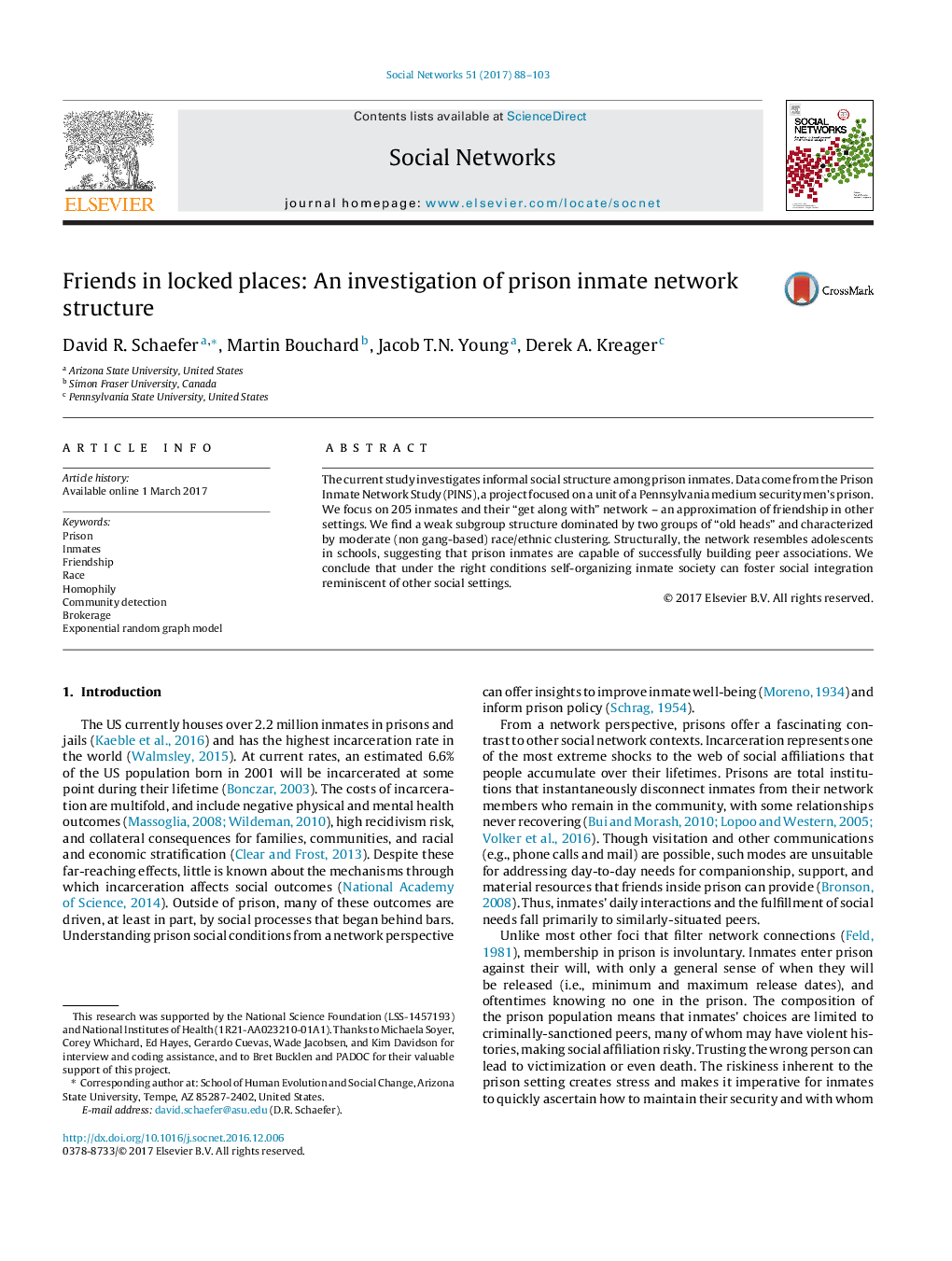| Article ID | Journal | Published Year | Pages | File Type |
|---|---|---|---|---|
| 5126759 | Social Networks | 2017 | 16 Pages |
â¢The first complete network study of prison inmates in the era of mass incarceration.â¢98% of inmates “get along with” at least one other inmate (average degree = 3.8).â¢Weak subgroups that include “old heads” but no gang or race/ethnic clustering.â¢Inmates who are more powerful or broker subgroups also bridge race/ethnic groups.â¢The inmate network resembles friendship networks in other settings.
The current study investigates informal social structure among prison inmates. Data come from the Prison Inmate Network Study (PINS), a project focused on a unit of a Pennsylvania medium security men's prison. We focus on 205 inmates and their “get along with” network - an approximation of friendship in other settings. We find a weak subgroup structure dominated by two groups of “old heads” and characterized by moderate (non gang-based) race/ethnic clustering. Structurally, the network resembles adolescents in schools, suggesting that prison inmates are capable of successfully building peer associations. We conclude that under the right conditions self-organizing inmate society can foster social integration reminiscent of other social settings.
